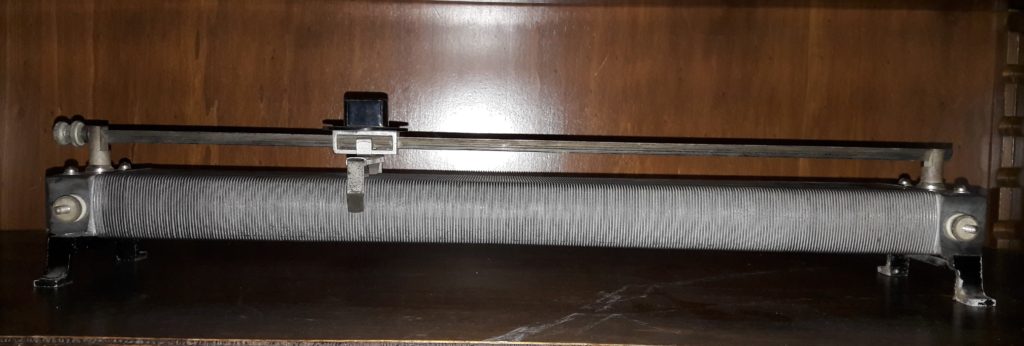
IT – Inventato alla metà del 1800 dal fisico britannico Charles Wheatstone, esso rappresenta una resistenza variabile. E’ costituito da un filo conduttore ad alta resistività avvolto a spire strette su un supporto isolante; un cursore a contatto strisciante col filo può essere spostato manualmente su una guida parallela all’asse dell’avvolgimento, andando così a variare la lunghezza del tratto percorso dalla corrente, e quindi in modo proporzionale la resistenza elettrica. Agli estremi dell’avvolgimento sono presenti due morsetti.
GB – Slider rheostat – Invented in the mid-1800s by the British physicist Charles Wheatstone, it represents a variable resistance. It consists of a high resistivity conductor wire wound in tight turns on an insulating support; a slider in sliding contact with the wire can be moved manually on a guide parallel to the axis of the winding, thus varying the length of the section covered by the current, and therefore proportionally the electrical resistance. At the ends of the winding there are two terminals.